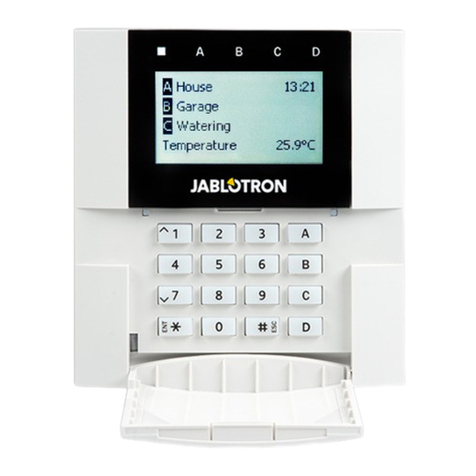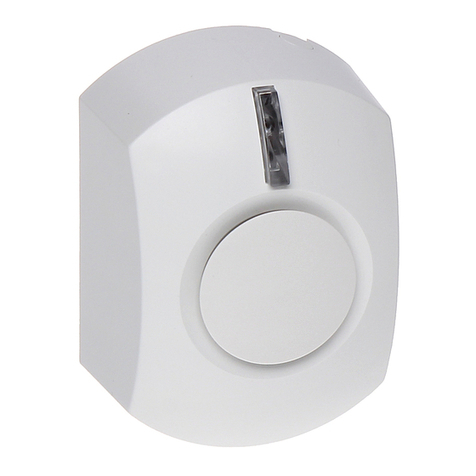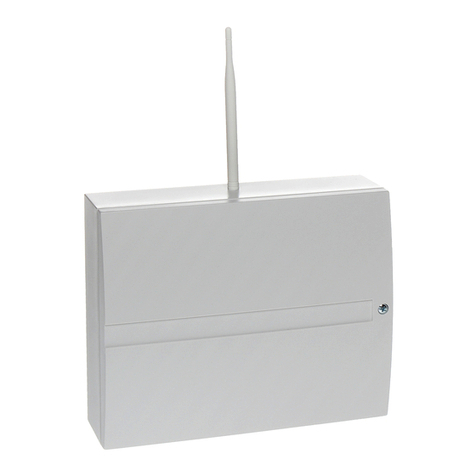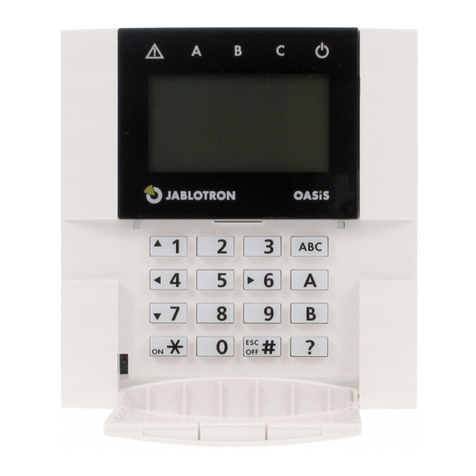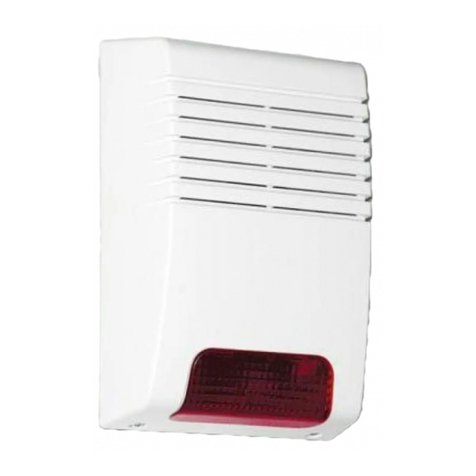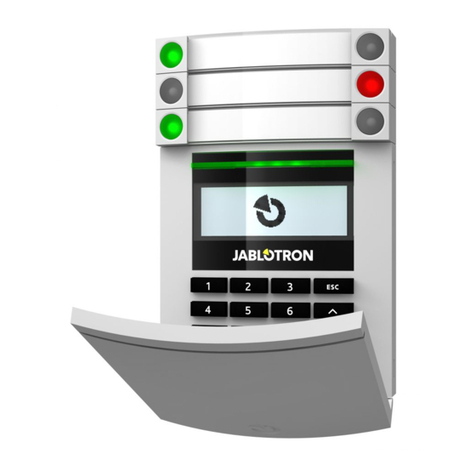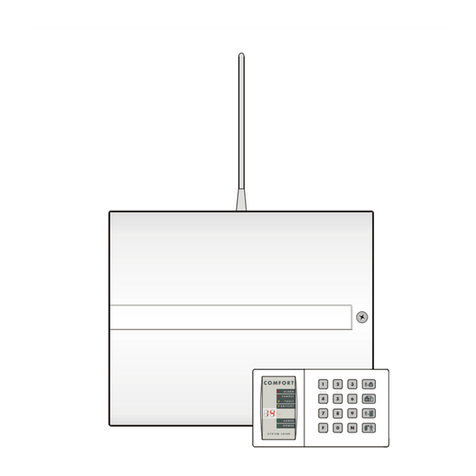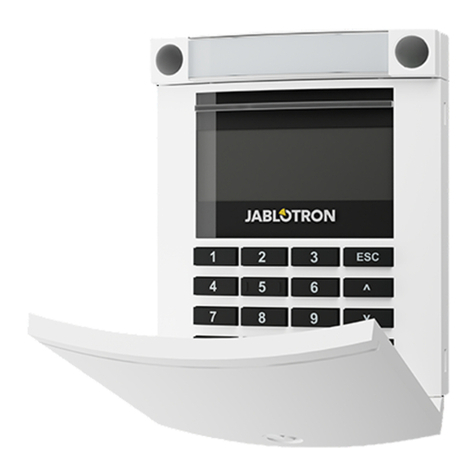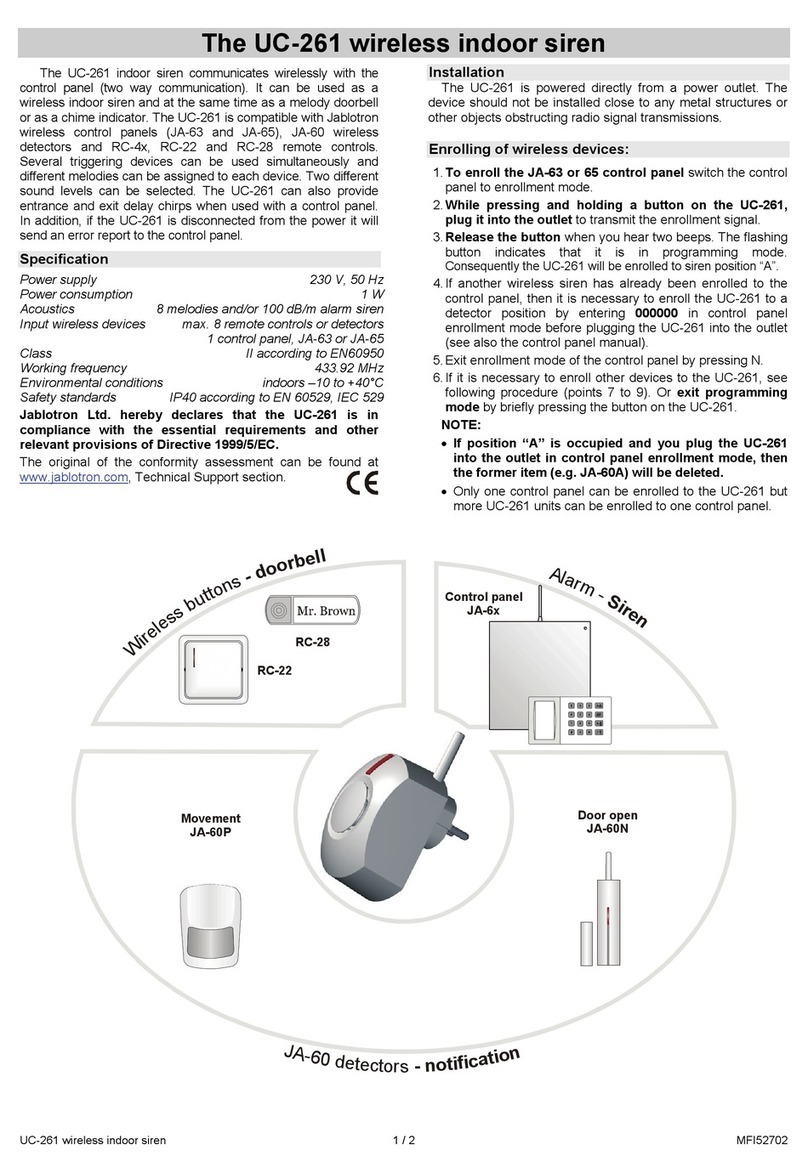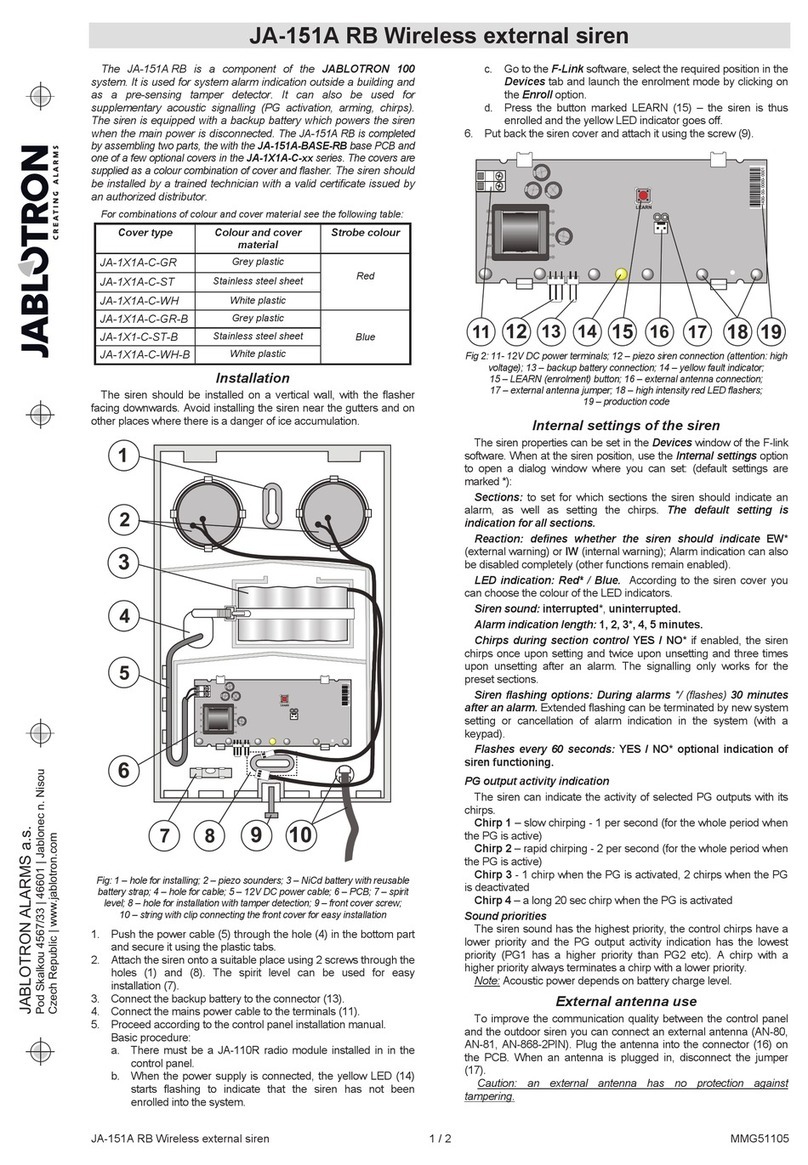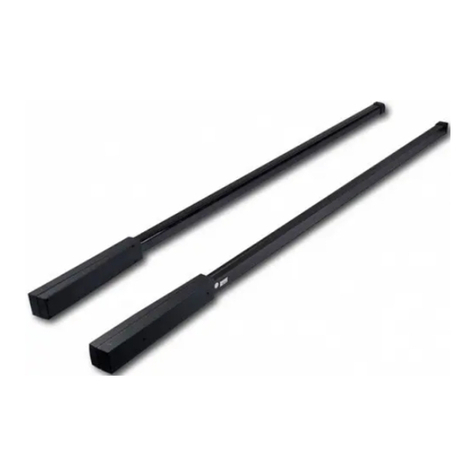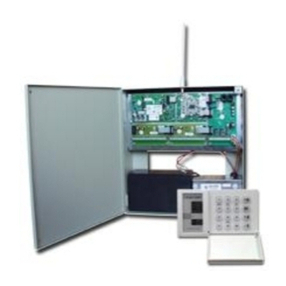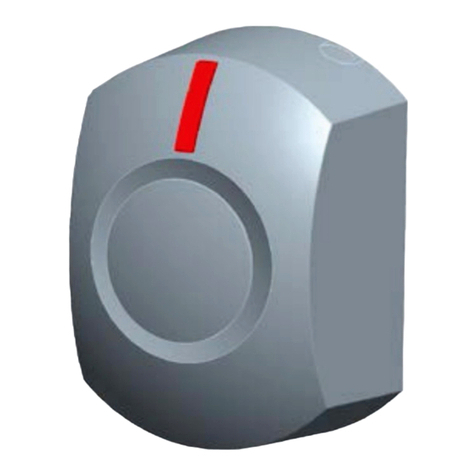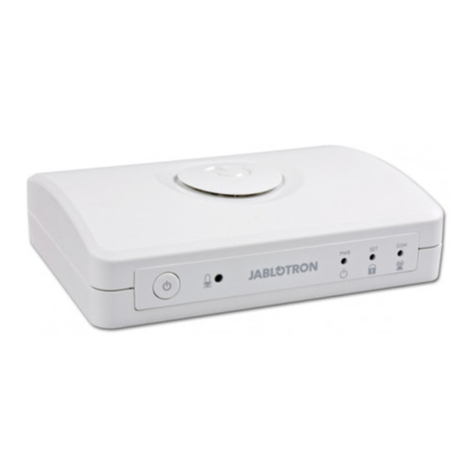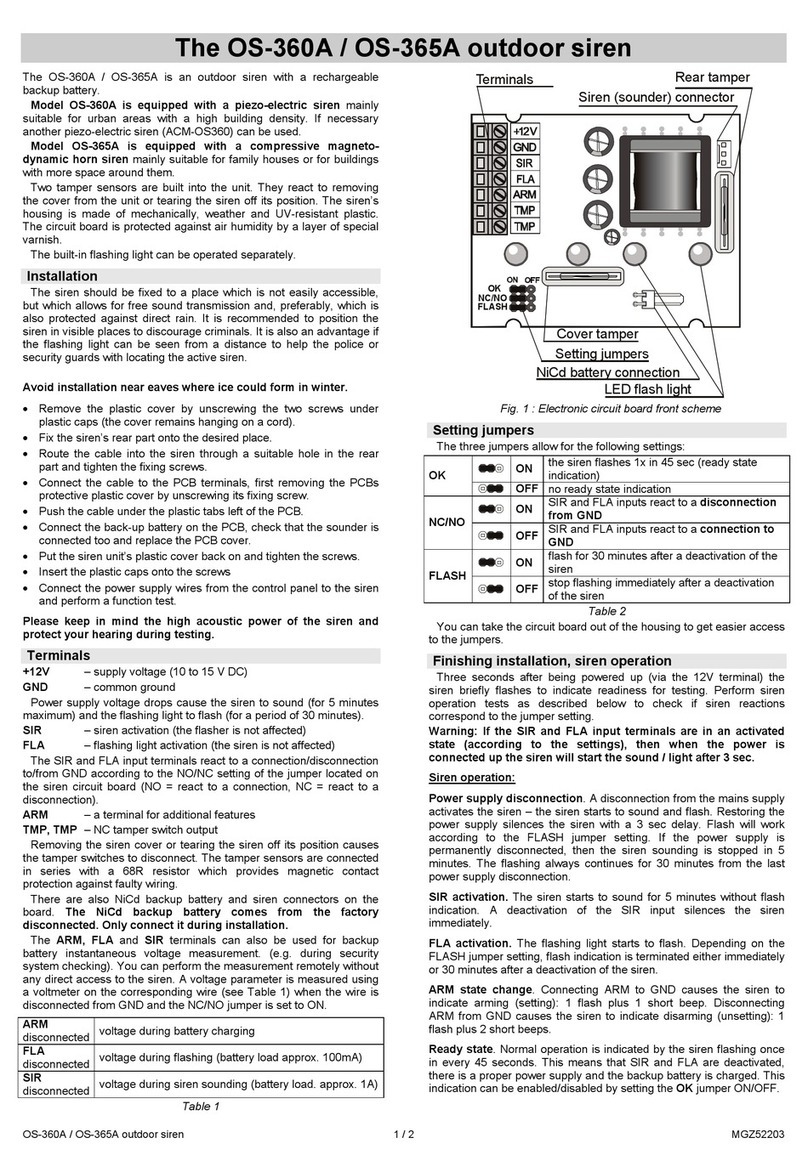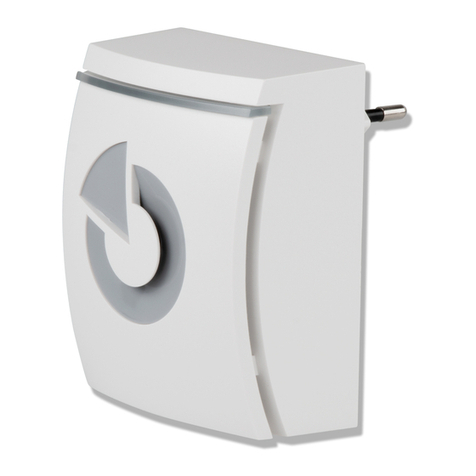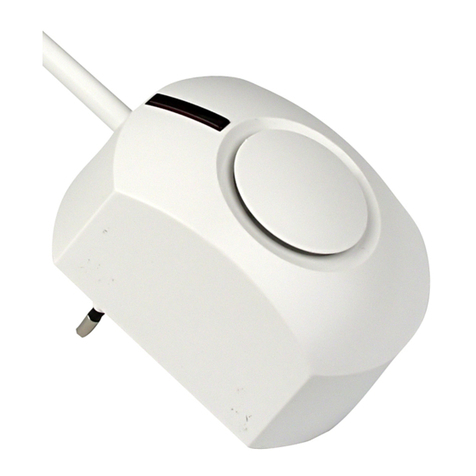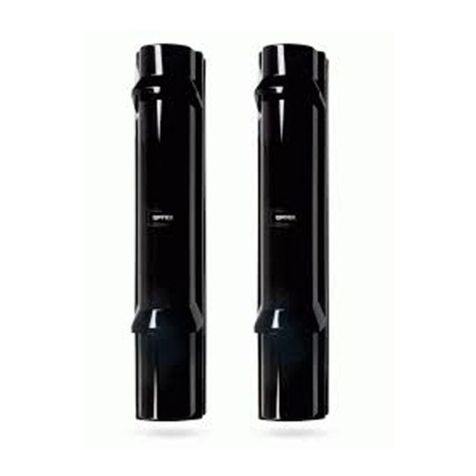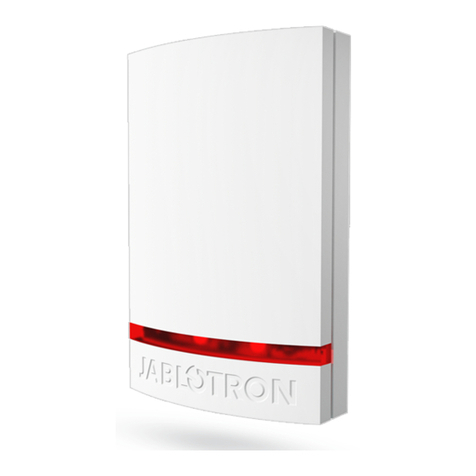
JA-16A RB Wireless outdoor battery-powered siren
JA-16A RB Wireless outdoor battery-powered siren 2 / 2 MNM55101
Enabling any of these mentioned options can
cause a reduced battery lifetime depending
on the frequency of its use. That´s why
we recommend fitting the BAT-
Other acoustic indication from sections: selection of the sections
for which sounds mentioned below will be produced. Default setting
is ‘All sections.
Higher volume: YES / NO* - affects only entrance / exit delay
indication and sounds indicating PG output triggering. It doesn´t have
any influence on the sound of an alarm.
During section control: YES / NO* – if enabled, the siren chirps
once after setting, twice after unsetting and three times when unsetting
after an alarm.
During warning: YES / NO* - When enabled the siren will beep
three times to indicate:
1) inability to set (a system status which prevents setting, such
as afault or a triggered detector)
2) unsuccessful setting (an event occurs during exit delay, e.g.
a triggered detector)
3) unsetting with alarm memory (an alarm occurred)
Entry delay: YES / NO* if enabled, it indicates the entrance delay
for the whole entrance time – intermittent beeping.
Exit delay when partially set: YES / NO* - if enabled, it indicates
the entrance delay for the whole time when the system has been
partially set – intermittent beeping. This option is available when Entry
delay is enabled.
Exit delay: YES / NO* - if enabled, it indicates the exit delay for
the whole exit time when the system is fully set – intermittent beeping.
Upon loss communication: YES / NO* - When enabled, the siren
sounds in case of loss communication with the control panel longer
than (110 min). The length of sounding depends on ‘Maximum siren
time’ – where the option ‘During an alarm’ signifies 20 minutes.
Optical indication:
Flashes every 60 s: YES / NO* - It sets to one siren flash per
minute. It can be used as a warning that the building is protected
by an alarm system.
During warning: YES/NO* - if enabled, the siren indicates by triple
flashing:
1) inability to set (a system status which prevents setting, such
as a fault or a triggered detector)
2) unsuccessful setting (an event occurs during the exit time, e.g.
a triggered detector)
3) unsetting with alarm memory (an alarm occurred)
When controlled by a section: YES / NO* – it sets a siren to
optically indicate setting and unsetting of (a) section(s). It blinks once
when set and it blinks twice when unset and when unset after an alarm
then three blinks.
After alarm expiration: During alarms*/ 1/ 3/ 5/ 30/ 60 min
of flashes after an alarm. This option can set the length of siren
flashing for only the alarm time or extended for by a pre-set interval.
Extended flashing can be terminated by new system setting or
cancellation of alarm indication in the system (with a keypad).
Periodical communication: 1 s / 8 s – This parameter can set
the maximum postponed reaction of the siren to an alarm,
supplementary indication or Signalling PG.
Notes:
−PG output activation sometimes might not be indicated when
periodical communication is set to 8 s and a PG output is
switched ON for a shorter time than 8 s.
−If the end customer wants any of the supplementary indications
mentioned above, we recommend setting the ‘Periodical
communication’ to 1 s in order to have a faster response time
when section or PG state changes.
−When periodical communication is set to just 1 s it can reduce
the typical battery lifetime by half.
Signalling PG tab:
The siren can indicate the activity of selected PG outputs with its
beeps.
Slow beeping - 1 per second (for the whole period when the PG
is active)
Quick beeping - 2 per second (for the whole period when the PG
is active)
1xOn/2xOff - 1 chirp when the PG is activated, 2 chirps when the
PG is deactivated
20 seconds of beeping – a long 20 s beep when the PG is
activated
Settings according to security grade 2
To set the siren to comply with security grade 2 use N-Link SW,
the ‘Parameters’ tab and the option ‘System profiles’ set to
‘EN50131-1, gr.2’. Device will be configured according to required
properties.
Sound priorities
The siren sound has the highest priority, the control chirps have
a lower priority and the PG output activity indication has the lowest
priority (PG1 has a higher priority than PG2 etc). A chirp with a higher
priority always terminates chirping with a lower priority.
External antenna use
To improve the communication quality between the control panel
and the outdoor siren you can connect an external antenna (AN-868).
Plug the antenna into the connector (15) on the PCB. Detection
of a connected antenna is performed only when the cover is open
(active tamper). If the siren during closing the cover detects the
external antenna, it is automatically used for radio communication.
If the antenna is shorted out or cut off, it automatically switches to the
internal antenna and a tamper alarm is sent. When the siren cover is
closed with no external antenna, the internal antenna is used for radio
communication.
Battery replacement
The product checks the battery status automatically. When
a battery fault is triggered, the system informs its user (or service
technician). The siren remains fully functional, but we strongly
recommend to replace the battery is replaced within 2 weeks.
Don´t charge the battery at all. Use the BAT-100A type only. If two
batteries are used, always replace both batteries at once. The
battery can be changed in control panel service mode by a service
technician. When replacing is finished, test the siren’s functioning.
Take the used battery to an official collection point, don´t dispose
in the general trash.
Technical specifications
The JA-16A RB parts (lithium battery, front cover and base) are
supplied individually.
Power Lithium battery 3.6 V/13 Ah type BAT-100A
(up to 2 batteries can be used)
Please note: battery is not included
Current consumption (nominal/maximal) 0.3 mA/1000mA
Battery low voltage ≤2.8 V
Typical battery lifetime approx. 5 years (for basic settings)
Communication frequency 868.1 MHz, protocol JA-10
Communication range approx. 300 m (open area)
Antenna internal, external can be used, type AN-868
Activation lost integrity acoustic tamper alarm (110 min)
Piezo electric siren 100 dB/m
Dimensions (cover included) 200 x 300 x 70 mm
Weight 434 g
Classification security grade 2/environmental class IV
-according to EN 50131-1, EN 50131-4, EN 50131-5-3
-environment general outdoor
-operational temperature range -20 °C to +60 °C
-power supply type W
-operational humidity 75% (95% 30 days) RH, non-condensing
-certification body Trezor Test s.r.o. (no. 3025)
Security grade IP44
Also complies with ETSI EN 300 220-2, EN 50130-4,
EN 55032, EN 50581,EN 62368-1
Can be operated to ERC REC 70-03
JABLOTRON ALARMS a.s. hereby declares that the
JA-16A RB
is in a compliance with the relevant Union
harmonisation legislation: Directives No: 2014/53/EU,
2014/35/EU, 2014/30/EU, 2011/65
conformity assessment can be found at www.jablotron.com
-Technical Support section.
Note: Although this product does not contain any harmful
materials we suggest you return the product to the dealer or
directly
to the producer after use. For more detailed
information visit www.jablotron.com.
